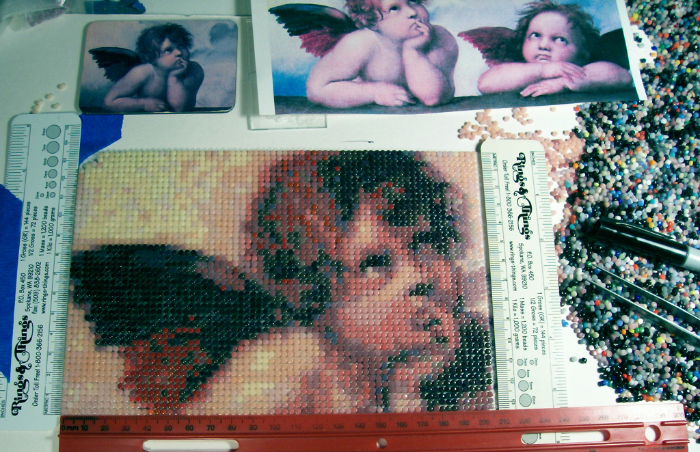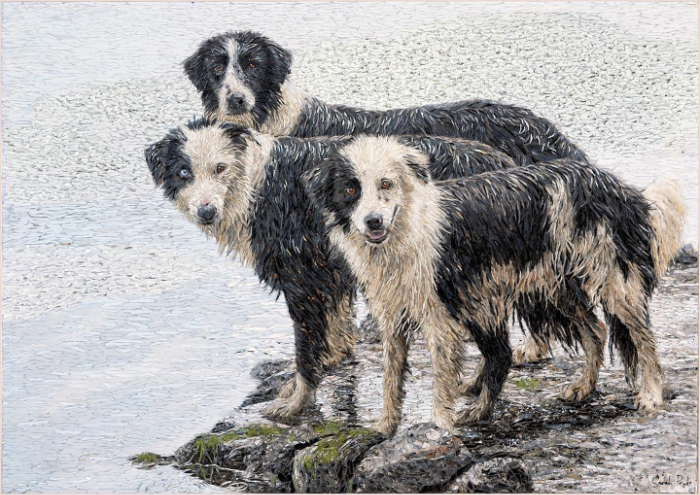
Interview with mosaic artist Sarah Pryke
South African artist Dr Sarah Pryke has brought a scientific eye to the creation of her finely detailed glass mosaic pieces. Linda Banks finds out more.
You have an academic background in biology, which clearly influences your highly realistic artworks. What led you to start working with glass mosaic?
My work as a mosaic artist evolved unintentionally. While working as a biologist in Australia, I was looking for a creative outlet and tried mosaics at a local Saturday class and I guess I caught the mosaic bug! In 2016 I sold my first mosaic and within a few months I had a full-time business and growing commission list.
I started out working with ceramic tiles, slowly incorporating more and more stained glass into my artworks over the years, as I began to experiment and create more detailed and realistic work. Initially, I found glass a rigid and often unforgiving medium, but I’ve learnt to love its reflective nature, which changes depending on the lighting and angle of viewing. This reflectivity can bring an added dimension to the artworks, allowing them to continuously change, and helps bring the scenes and subjects to life.
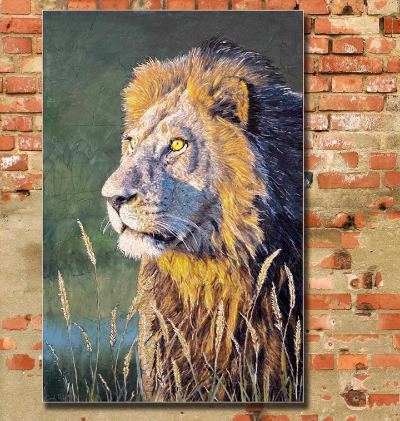
While mosaic is your preferred method, are there other glass techniques you use?
I sometimes play around with fusing glass to create unique elements and add interest and texture. This includes specific body parts (such as noses), to fur and tree bark. I will often use the ‘wrong’ techniques here to produce cracks, bubbles and weird textures in the glass to help create the desired effect.
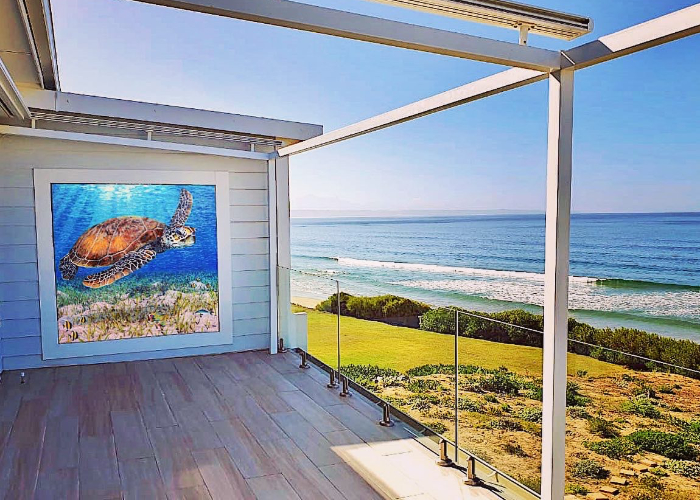
What is your creative approach? Do you draw your ideas out or dive straight in with the materials?
If I’m working on a pet or animal portrait, I will usually sketch the animal directly onto the board, using multiple reference photos to try and capture the characteristic traits and emotions of the subject. If I’m designing a unique scene, I usually sketch the basic design in watercolours first (and then play around and change it many, many times!) before sketching it on to the backing board. I often end up changing many sections, or at least some elements, as I begin working, because I find that the sketched ideas or designs in my head don’t always translate well into the mosaic. But I guess that this is the challenge of working in this medium!
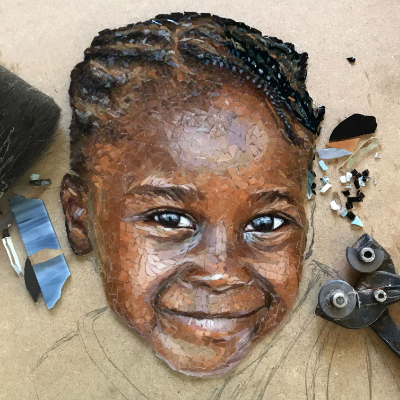
What message(s) do you want to convey through your art?
I think that the main message I want to convey is the incredible beauty of nature. I’ve always had a passion for animals and wildlife, first explored academically through my biological research, and now creatively through my mosaic artworks.
I try to capture not just the shape, patterns and lines of the birds and animals, but also each character and personality, in the hope of providing the viewer with an emotional reaction to the subject. Perhaps because of my biological background, I also attempt to place subjects and scenes in realistic and natural contexts (while still providing my artistic interpretation) to highlight the beauty of the natural world.
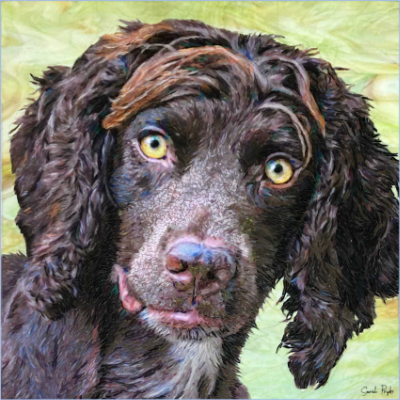
What is your favourite tool or piece of equipment and why?
Probably my very old, wonky and damaged veterinary dissecting tweezers! I found these little tweezers in an old laboratory dissecting kit that I was throwing away about five or six years ago and, since then, I have used them on every mosaic. They need to be replaced, but I’ve never managed to find a suitable replacement that I am comfortable with. Every time I pick up the old tweezers and start working, I feel right at home!
Do you have a favourite piece you have made? Why is it your favourite?
This is a very hard question to answer. There are so many favourites, those that evoke special memories… those that have really challenged and taught me important lessons… those that have been pivotal in influencing the direction and evolution of my artwork. It’s hard to choose!
I guess one of my ‘favourites’ is a large (life size) artwork of my three-legged dog, Joey, shaking off water after swimming. I made this one about five years ago and, although there are many aspects I’d like to change about it, every time I walk past it catches my eye with the water sparkles and I find myself smiling at ‘Joey’. I only own three of my own mosaic artworks (two of which were my first ones), so I guess that it must be a favourite as I haven’t sold it!

Where do you show and sell your work?
I mostly work on commissions, which go to homes all around the world. I also sell through local (South African) galleries and art exhibitions, as well as through my Facebook and Instagram pages.
Do you have a career highlight?
One of the many highlights was designing and creating a large bar for a private game lodge (Tuludi) in Botswana. I worked on different sections of this mural in my studio, before they were crated and trucked up to the lodge. I then went on site to complete and grout the mosaic work. This mural was definitely challenging (especially working on the curve with inflexible glass!), but it was such a fun and rewarding project. And it was pretty special to work with elephants watching!
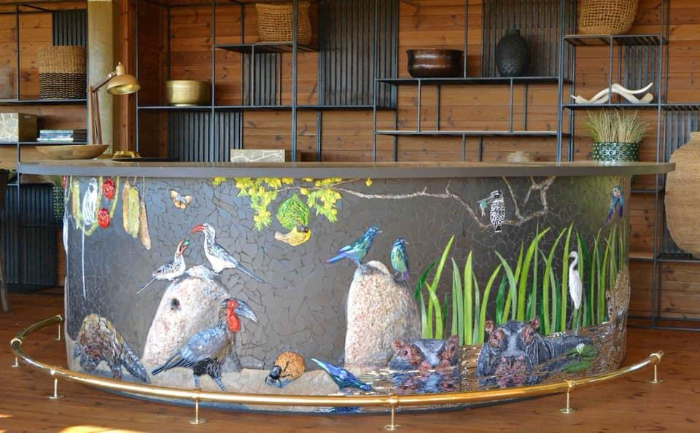
Where is your mosaic practice heading next?
That is a very good question – and one that I wish I had the answer to! With the clarity of hindsight, I can see that my style has evolved to become much more realistic over the years, as I work to capture the finer details of my subjects and scenes. This approach was not intentional; it has simply evolved through trial and error as I constantly experiment and learn from each artwork that I’ve done. I’m quite excited to see where it goes from here.

What advice would you give to someone starting out on a creative career?
I would recommend following your passion, whether it be in the subject matter or medium, and then finding your own unique niche and creative process. Many new artists start out by copying or trying to imitate other artists that they admire or aspire to, and although this can help with learning techniques, I think it can hinder finding your own creative expression and path. I would encourage experimenting with what interests and intrigues you, taking risks and not being afraid to make mistakes; this is where you really learn and evolve.
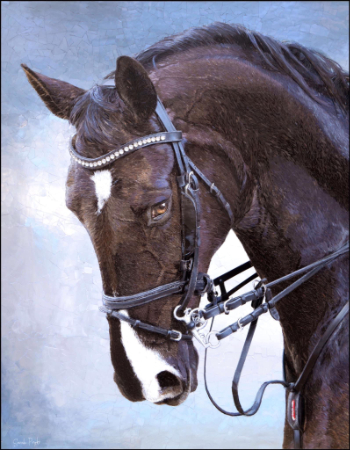
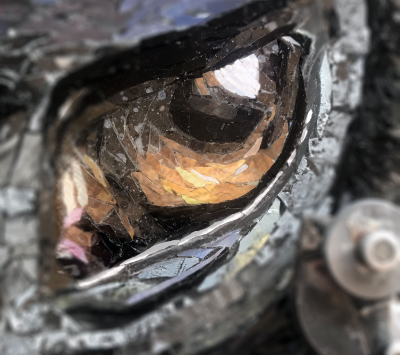
And finally…
It is interesting to look back through photos of my art over the last eight years and see how much my style, approach and technique have changed. I really had very little idea about what I was doing when I started, or where this could potentially lead, and I never imagined I would become a full-time artist. This finely detailed mosaic work is incredibly time consuming, often challenging and sometimes very frustrating, but I absolutely love it!
Find out more about Sarah Pryke and her artwork via her website, Facebook or Instagram.
Main feature image: ‘Carla’s Collies’ is a commission made in 2022. It is made from glass and measures 60x85cm. All images taken by the artist.
